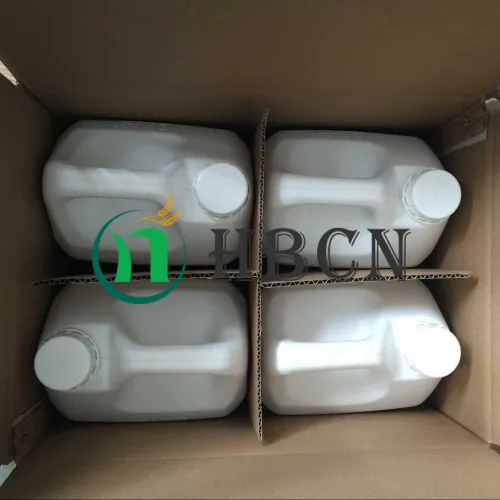
Nov . 11, 2024 16:36 Back to list
oem pymetrozine 50 wg
Understanding OEM Pymetrozine 50 WG An Overview of its Role in Crop Protection
In the modern agricultural landscape, the use of effective pest control agents is paramount to securing successful crop yields. Among these, Pymetrozine has emerged as a noteworthy insecticide, particularly in its OEM (Original Equipment Manufacturer) formulation of 50 WG (Water Dispersible Granule). This article delves into Pymetrozine’s chemical properties, modes of action, applications, and its significance in integrated pest management.
Chemical Properties and Mode of Action
Pymetrozine belongs to the novel class of insecticides known as pyridine azomethines. It exhibits a unique mode of action as it selectively targets the insect nervous system, specifically impacting the behavioral mechanisms of piercing-sucking insects like aphids, whiteflies, and thrips. By inhibiting feeding, Pymetrozine effectively disrupts the pest’s lifecycle. The 50 WG formulation is designed for ease of use, providing uniform distribution when mixed with water, which enhances its effectiveness in the field.
This mode of action gives Pymetrozine a distinct advantage over other insecticides. While many traditional insecticides function as neurotoxins affecting a wide range of insects, Pymetrozine’s specificity minimizes detrimental impacts on beneficial insects. This selective targeting is critical in maintaining ecosystem balance and allows natural predators to thrive, further supporting sustainable farming practices.
Applications in Agriculture
Pymetrozine 50 WG is primarily employed in various crops including vegetables, fruits, and ornamentals. The efficacy of this insecticide extends to controlling populations of troublesome pests that pose significant risks to crop health. In vegetable farming, for instance, Pymetrozine proves effective against endangering pests like aphids, which can transmit viral diseases or cause direct damage through feeding. In fruit cultivation, the protection against whiteflies is essential, given the risk these pests pose to fruit quality and yield.
oem pymetrozine 50 wg

The versatility of Pymetrozine makes it a valuable addition to any crop protection program. Farmers appreciate its compatibility with other treatments, allowing for integration into broader pest management strategies. Moreover, its application through common equipment enables ease of deployment across large agricultural fields.
The Significance of Integrated Pest Management
The use of Pymetrozine in integrated pest management (IPM) systems highlights its importance in modern agriculture. IPM combines several methods—biological control, cultural practices, and chemical control—to achieve sustainable pest control. By incorporating Pymetrozine into IPM frameworks, farmers can bolster their defenses against pest infestations while reducing reliance on conventional insecticides.
Moreover, this approach aligns with global trends toward sustainable agriculture. With increasing consumer demand for environmentally friendly practices, the adoption of selective insecticides like Pymetrozine can play a crucial role in addressing these concerns. The careful use of such products minimizes residue on crops, enhancing food safety and aligning with organic farming principles where feasible.
Conclusion
In summary, OEM Pymetrozine 50 WG stands out as an effective tool in the agricultural sector, particularly for its targeted action against specific pests. Its unique properties facilitate its integration into IPM strategies, promoting sustainable practices that benefit both farmers and the environment. As the agricultural industry continues to evolve, the reliance on specialized insecticides like Pymetrozine is likely to increase, ensuring crops thrive in the face of growing pest challenges. As we move forward, continuous research and development will be essential in optimizing the use of such products and enhancing the resilience of agricultural systems worldwide.
-
Insecticide Spirotetramat 11% + Thiacloprid 11% SC at Good Price
NewsJul.30,2025
-
Best Abamectin SDS - Premium Quality & Reliable Safety Data
NewsJul.29,2025
-
Agrochemicals Pesticides Solutions for Sustainable Farming
NewsJul.29,2025
-
High-Quality Tebuconazole Fungicide for Crop Protection at Best Price
NewsJul.29,2025
-
Chlorfenapyr 8% + Clothianidin 20%SC Pesticide Mixture for Effective Pest Control
NewsJul.28,2025
-
Best Azoxystrobin Difenoconazole Supplier for Crop Protection
NewsJul.28,2025
